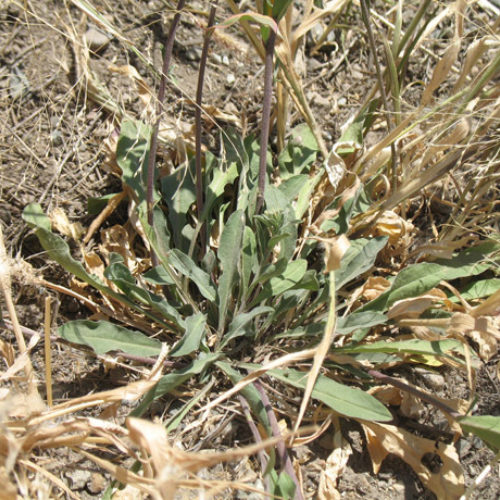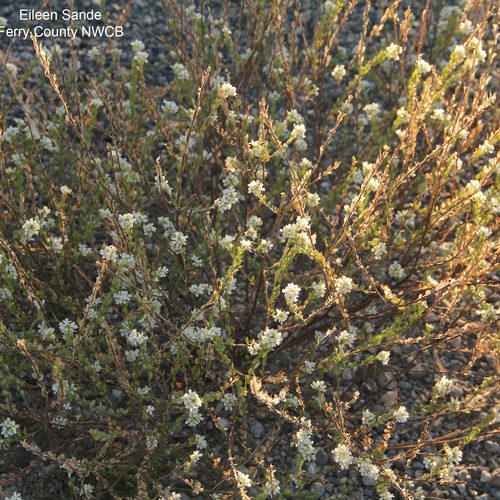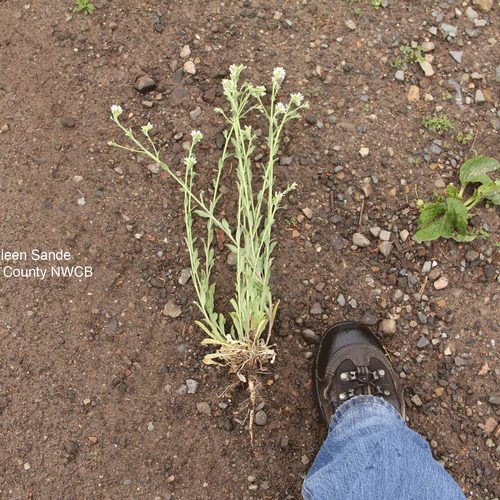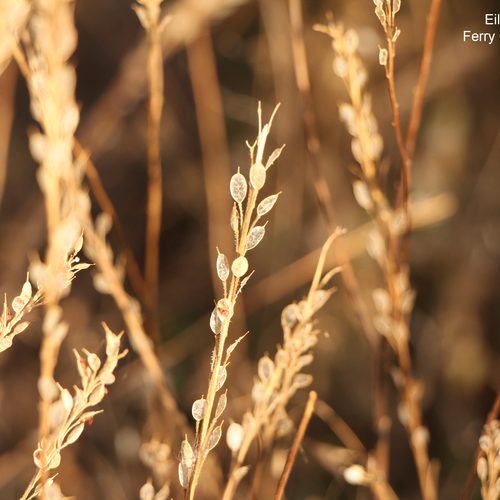Hoary Alyssum
Berteroa incana

Family: Brassicaceae
Weed class: B
Year Listed: 2004
Native to: Europe and Asia
Is this Weed Toxic?:
livestock
Why Is It a Noxious Weed?
It is noted to invade pastures, out-compete beneficial plants and quickly spread through stressed areas. It has been noted for animal poisoning and potentially cause death. Livestock are known to become intoxicated after eating green or dried plants.
How would I identify it?
General Description
Hoary alyssum is an upright annual, biennial or short-lived perennial herb growing about 1 to 3.5 feet tall. Plants are covered in stellate hairs causing it to look silvery-gray in color.
Flower Description
Flowers are in simple or branched clusters (racemes) and bloom from the bottom up. Flower petals white, two times longer than sepals and are deeply cleft. Each flower has 6 stamens.
Leaf description
Plants have basal and stem leaves. Basal leaves are oblanceolate, 0.75 to 2 inches long by 0.2 to 0.4 inches wide, and have smooth margins. Leaves gradually reduce in size moving up the stem with alternate leaf arrangement.
Stem description
Stems are generally unbranched near base and branched above.
Fruit Seed Description
Seeds are in somewhat inflated pod-like structures called silicles that are oval shaped and around 0.25 inches long. Seeds are round, brown and have narrowly winged margins.
Where does it grow?
Hoary alyssum adapted to dry conditions on sandy or gravelly soils. It is found in overgrazed pastures, stressed meadows, roadsides and waste areas. It is increasingly becoming a problem in the Northeast section of the state. Please click here to see a county level distribution map of hoary alyssum in Washington.
How Does it Reproduce?
Hoary alyssum reproduces by seed.
How Do I Control It?
General Control Strategy
Well-maintained pastures provide suppression of hoary alyssum through competition.
Mechanical Control
Small invasions of hoary alyssum can be dug out or hand-pulled. Areas should be surveyed for returning plants and pulled when necessary. Mowing plants can also prevent seed production.
Herbicide Control
Please refer to the PNW Weed Management Handbook, or contact your county noxious weed coordinator.
For More Information
See our postcard for early detection information about hoary alyssum.
See our Written Findings for more information about hoary alyssum (Berteroa incana).
Biology, Ecology and Management of Hoary Alyssum from Montana State University Extension
Okanogan County NWCB Fact Sheet on hoary alyssum






















